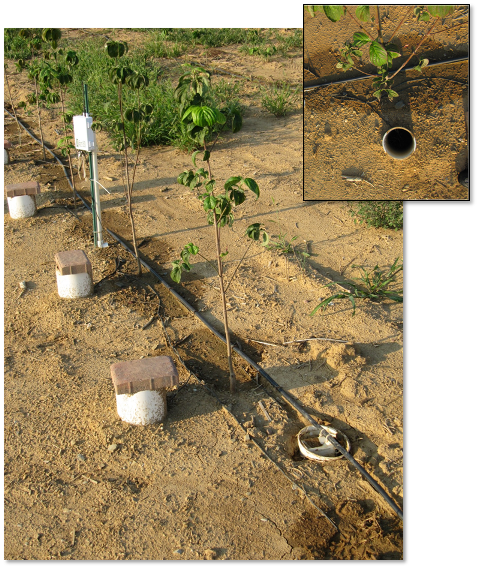You are here
Strategies
 A one-node network on four Cornus florida transplants. Note the surface drip irrigation pattern from two emitters (top inset).
A one-node network on four Cornus florida transplants. Note the surface drip irrigation pattern from two emitters (top inset).We also established two, one-node (five sensor) networks in a newly transplanted Acer rubrum and Cornus florida indicator blocks in late June, 2010.
Four 10HS Decagon sensors were placed at a 6” depth directly in the root zone of each tree, to monitor soil moisture in the rootball, rather than under the drip emitter, as had been done previously. This was done to directly monitor how long it took for an irrigation event to move into the root zone, and provide Steve Black with a capability to monitor the soil moisture status of his newly transplanted blocks which are irrigated daily.
Irrigation events were again captured with a ECRN-50 rain gauge (with a rain cover) under a dripper in the row (sensor in ground container, shown without lid in Figure 10).
This network had an immediate impact on scheduling irrigation on this 10-acre block and the entire farm during this drought year in 2010. This impacts of this iis discussed under Raemelton current results.
